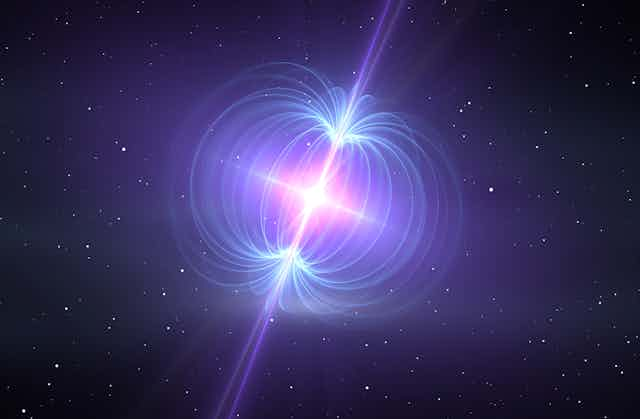In the vast expanse of the cosmos, a subtle yet profound melody plays—a symphony of gravitational waves that traverse the fabric of space-time. These waves, ripples caused by cataclysmic cosmic events, carry with them the secrets of the universe’s most enigmatic phenomena. Today, we stand on the brink of a revolutionary discovery that unveils the influence of the strong force—nature’s mightiest binder—on this cosmic symphony. This revelation not only deepens our understanding of the universe’s rhythm but also heralds a new era in astrophysics. Join us as we embark on an odyssey through the stars, unravelling the mysteries woven into the very essence of the universe.
The Discovery Unraveled: The Strong Force’s Signature
Gravitational waves, first predicted by Einstein and confirmed a century later, have opened a new window into the cosmos. But amidst the cacophony of waves from colliding black holes and exploding stars, a distinct signature has emerged. Physicists have now shown that the strong force, the glue that binds quarks and gluons within atomic nuclei, leaves a unique imprint on these waves. As the universe cooled from its fiery inception, this force choreographed a dance of particles that now echo through time as gravitational waves. This discovery, published in the esteemed journal Physical Review Letters, marks a pivotal moment in our quest to comprehend the universe’s infancy.

Why It Matters: Decoding the Cosmic Message
Why is this discovery so pivotal? Because it provides a lens through which we can view the universe’s earliest moments. The strong force’s influence on gravitational waves could help us decipher the universe’s evolution, from the Big Bang to the present day. It challenges our understanding of cosmic history and offers a new narrative of the universe’s creation. This insight is not merely a piece of the puzzle; it is a key that could unlock the mysteries surrounding the birth of the cosmos.
Learning from the Waves: Harmonizing with the Cosmos
The ramifications of this discovery are as vast as space itself. It paves the way for new methods to detect and analyze gravitational waves, refining our cosmic instruments to capture the universe’s whispers more precisely. This knowledge propels us not only to understand our origins but also to predict our cosmic destiny. It’s a testament to human ingenuity and our relentless pursuit of knowledge, reminding us that the universe’s dance is far from over, and we are just beginning to learn its steps.
Conclusion: The Dance Continues
As we conclude this exploration, we stand in awe of the universe’s grandeur and the relentless pursuit of knowledge that drives us. Today’s discoveries become tomorrow’s history, and the strong force’s influence on gravitational waves is a testament to this journey. Thank you for joining us on this voyage through the cosmos. The dance of the universe continues, and we are all part of this magnificent ballet.



















